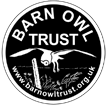How to control rats as safely as possible
Killing rodents can only provide short-term control of populations.
Sustainable control can only be achieved by reducing the rodent carrying capacity of the environment, principally by reducing food and harbourage.
Poisons should only be used as a very last resort where non-toxic and less-toxic methods have been deployed and a significant rodent problem still exists and is a threat to human health.
We recommend that rodent control methods are used in the following order:
- Remove access to food – get rid of whatever they are eating or prevent their access to it (e.g. by rat-proofing buildings). Change feeder designs, feeder positions, and feeding regimes so that the birds/animals you want to feed can access the food but rats cannot or are more exposed to predation.
- Remove harbourage – remove whatever the rodents are under, in, or behind. Block holes with stone, cement/concrete, ferrous metal or balls of squashed wire netting. Note: following MAFF-funded research, the Central Science Laboratory reported that removing harbourage is as effective as using poison and more useful as a long term approach (Lambert et. al 2003).
- Encourage natural predators – erect Barn Owl and Tawny Owl nestboxes – high up but as close as possible to the problem rodents. Be tolerant of Foxes – they also eat rats. Keep rat burrow areas clear of vegetation.
- Encourage domestic predators – Jack Russell terriers (and similar) generally love ratting. Death is usually very quick.
- Live traps – trip-traps and cage-traps are readily available. Slightly time-consuming; traps should be checked twice a day. Release rodents at least several kilometres away.
- Instant-kill traps – spring-traps and snap-traps should be baited with hard food morsels carefully tied on with thin wire. DOC traps and Perdix traps set in wooden tunnels are amongst the most humane. Slightly time-consuming; traps should be checked daily. Please be aware that some pre-baited instant-kill traps might also target Weasels and Stoats and so should be avoided.
- Electrocution devices – Rat Zapper (or similar) battery powered devices do work. Slightly time-consuming; small electrocution devices should be checked daily. Large multi-catch devices like the WiseBox are much less time-consuming and, compared to poisoning, a very humane and safe way of killing.
- Shooting – a pre-charged pneumatic (PCP) air rifle with an infra-red or thermal gunsight used at night can be very effective. Very time consuming. Contact your nearest air rifle club. Risk of slow death related to skill level.
- Cholecalciferol – A biocide poison which causes a fatal vitamin D3 overdose when ingested. Available in bait blocks and used in the same way as first and second-generation rodenticides. Negligible risk of secondary poisoning to raptors, however extremely toxic to pets (especially dogs).
- Fumigant (aluminium phosphide or hydrogen cyanide) – contact a local pest control company. Produces deadly gas on contact with moisture. Death is probably very quick with most dying underground, so little or no risk to others. Note: in the EU, aluminium phosphide is only approved for use outdoors.
- Alphachloralose – (mice only). Contact a local pest control company. Death is apparently fairly quick with most dying close to the baiting points or in runs or burrows, so little risk to others. Note: in the EU and UK, Alphachloralose is only approved for the indoor control of mice.
Warning: All poisons listed below should only be used as a last resort where non-toxic and less-toxic methods have been tried and a significant rodent problem still endangers humans.
Read the rat poison products list – this lists the product names and active ingredients.
- Warfarin, coumatetralyl, or chlorophacinone – Warning: Use only as a last resort – widely available first-generation anti-coagulants. Inhumane. Death is very slow. Bait covering ineffective. Fairly high risk of secondary poisoning. Far less toxic, and metabolises out of the body faster, than those listed below. Rats resistant in some areas. Read the rat poison products list.
- Difenacoum – Warning: very toxic second-generation anti-coagulant. Inhumane. Death is very slow. Bait covering ineffective. High risk of secondary poisoning. May be very slightly safer than those listed below. Widely available. Avoid where Barn Owls are present. Read the rat poison products list.
- Bromadiolone – Warning: very toxic second-generation anti-coagulant. Inhumane. Death is very slow. Bait covering ineffective. High risk of secondary poisoning. Widely available. Avoid where Barn Owls are present. Read the rat poison products list.
- Flocumafen, brodifacoum, difethialone – Warning: extremely toxic. Inhumane. Death is very slow. Bait covering ineffective. High risk of secondary poisoning. Avoid where Barn Owls are present. Read the rat poison products list.
Warning: Do not use poison where or when there is no rodent problem.
So-called Preventative Baiting and Permanent Baiting are a major cause of secondary poisoning and contrary to the UK Rodenticide Stewardship Regime. When there are insufficient rats to consume the bait it will be eaten by non-target small mammals such as Wood Mice and Bank Voles. Even Field Voles and Common Shrews have been found to contain rat poison. The contamination of these harmless little animals results in the poisoning of Barn Owls and Kestrels.
One of a new generation of high-tech rat traps.
Other relevant pages:
- Rats and rat poison – the regulatory review and what we are doing about it.
- Background to the Rat poison problem – How the poisons work, routes of wildlife contamination etc.
- Rat poison products list – Table of product names and active ingredients divided into 1st and 2nd generation (SGARs)
There is more information about rodent control in the Barn Owl Conservation Handbook.

![Barn Owl with rat BAROW Food Rat [Terry Browse] 010189 (B)](https://www.barnowltrust.org.uk/wp-content/uploads/Barn-owl-food-rat.jpg)
